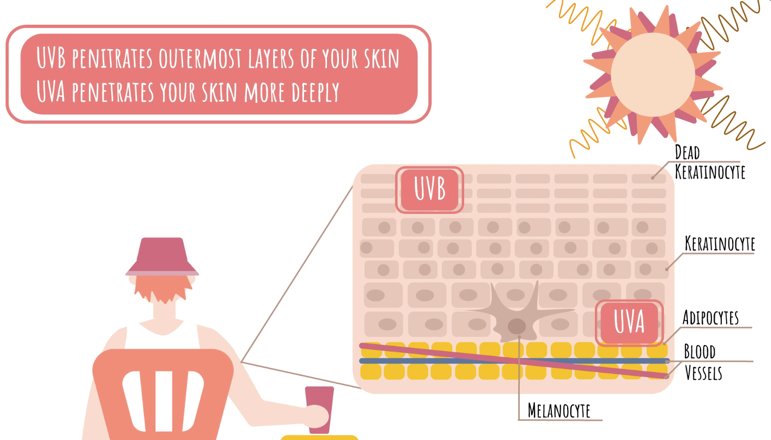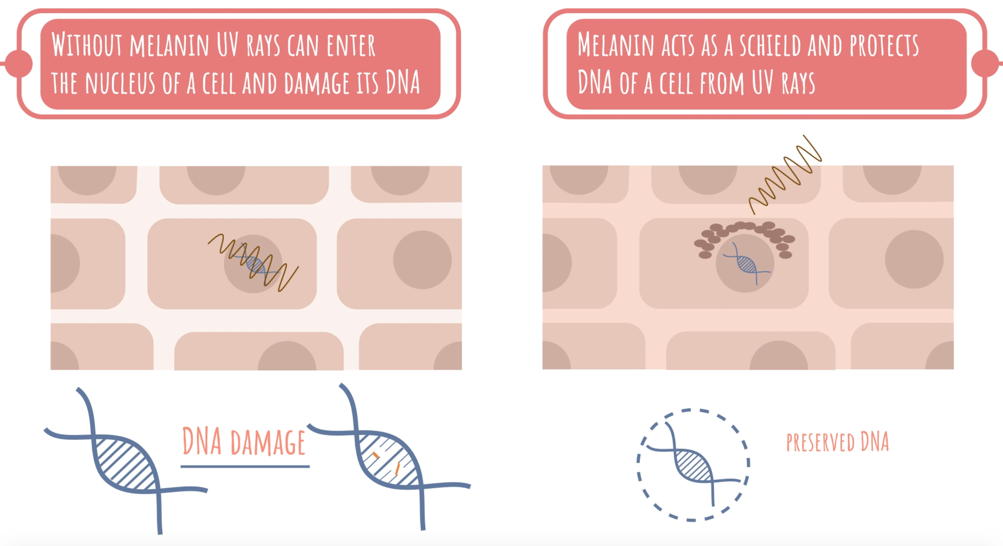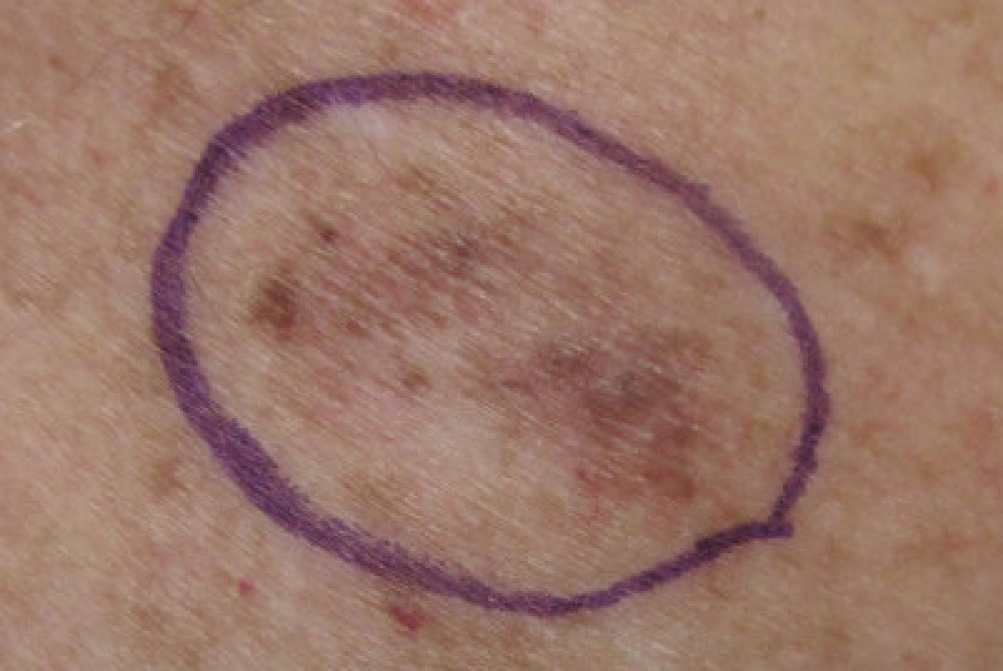“Abbronzatissima / sotto i raggi del sole, / come è bello sognare, / abbracciato con te.”
Once summer starts we can’t wait to get tan “under the sun rays”, like the verse of this famous song that people in Italy have all sung at least once in their lives.
But what is sun tanning? The main responsible of that is melanin, a pigment produced to protect us from ultraviolet rays.
Mechanism of action and relevance of sun tanning for human physiology
INDEX:
1. Uv rays
When the Sun rays reach the Earth, they contain two types of ultraviolet (Uv) radiations: UvA (95% of them) and UvB (5%).
Their main difference lies in their different ability to penetrate the skin:
- UvB rays strike the upper layer of the skin causing redness and sunburn;
- UvA rays penetrate more deeply.
Part of the energy of the UV rays is absorbed by the most superficial layers of our skin, while the remaining energy moves to the underlying layers meeting the melanocytes, cells specialized in producing the so-called melanin.

Uv rays ability to reach the different skin layers
2. Melanin
Melanin is a fundamental pigment for the balance of our skin: in addition to giving it color, it can absorb UV rays, thus protecting the skin.
The melanocytes, cells present in the basal layer of the epidermis, when stimulated by UV rays increase the synthesis of melanin which is released and transferred to keratinocytes, cells residing in the most superficial layers of the skin, giving it a dark color: the tanning effect.
Two types of melanin exist:
- Eumelanin or “dark melanin”: present at a higher percentage in people with a dark skin. It is more capable of shielding from UV rays;
- Pheomelanin or “red melanin”: present at a higher percentage in people with red hair.
Blonde people produce eumelanin and pheomelanin in the same amount.
The difference in the production of eumelanin or pheomelanin determines how each individual reacts to Uv rays, thus predicting the type of tan they will get:
- People with dark skin tone produce eumelanin in greater quantity so that they rarely burn and tan easily;
- Blond people, with a milky skin tone, burn easily and tan with extreme difficulty.
The production of melanin and the resulting tanning effect is therefore a defense mechanism put in place by the skin to protect itself from the damage induced by UV rays: the melanin produced by melanocytes and then absorbed by keratinocytes is arranged around their nucleus creating a sort of “cloak” that shields the DNA from UV rays.

Melanin as a shield for our DNA against Uv rays
3. Toxic effects of UV rays
However, the melanin produced by our cells may not be enough in case of excessive exposure to UV rays. In the long run, the following potential toxic effects may occur:
- Loss of Skin Elasticity, because of the Uv rays-induced degeneration of elastin and collagen, two structural proteins essential to the skin tissue;
- DNA damage: UV rays alter the DNA of our cells by forming abnormal chemical bonds between the nucleotides that compose it. If not properly repaired by the cells, these alterations can induce tumor mutations.
4. Skin tumors
Several types of tumors can affect our skin:
- Basal cell and spinocellular carcinomas, due to DNA mutations in keratinocytes;
- Melanomas, due to DNA mutations in melanocytes.
Melanoma is the most serious form of skin cancer because it can give rise more frequently to metastases, tumor forms that can invade other organs and therefore potentially lethal.
According to an article published in the International Journal of Cancer1, 91% of melanoma cases in the United States are related to UV rays, mainly from Sun exposure and would therefore be avoided by protecting the skin properly.

Malignant melanoma marked for biopsy
The skin is both our most important (surface equal to about 2 square meters) and most delicate dress. Therefore, it must be preserved with extreme attention, especially in summer.
Two simple tips to tan without risks:
1- Don’t rush – give your melanocytes enough time to produce melanin and tan without overexposing yourself to Sun rays;
2- Protect your skin by choosing a good sunscreen and by avoiding exposure during the hottest hours.
Enjoy your holidays!
Miriana Povolo, redazione scientifica @Nabu Creative Studio
- Cutaneous melanomas attributable to ultraviolet radiation exposure by state. International Journal of Cancer. 2020
